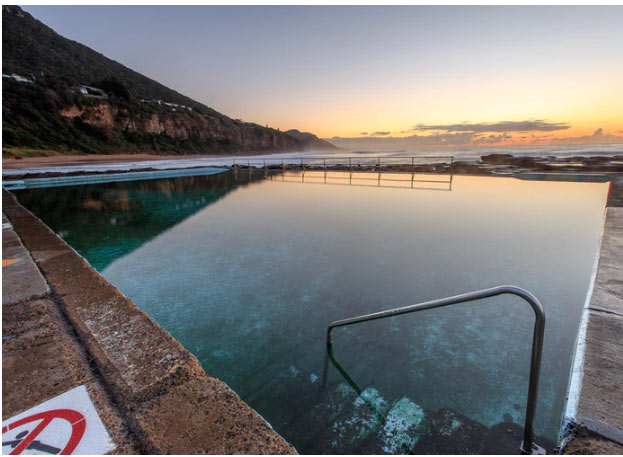In most of the country, July and August are the best times of year to enjoy swimming pools. Unfortunately, this two-month stretch is also when algae blooms most frequently. Higher temperatures, combined with inconsistent sanitizer levels, can cause serious algae problems. New pool owners especially can be blindsided by problems they didn’t anticipate.
Algae is a single-celled plant that uses photosynthesis to create its own food, and can be adaptable to almost any body of water.
It’s microscopic, and single cells can’t be seen by the naked eye. So when you see a mass of green, black, or yellow forming in your pool, that’s actually an accumulation of millions of individual algae!
Once it gets to this stage, cleaning a “green” pool can be costly and time-consuming. That’s why it’s always best to be prepared and proactive. Preventing algae from forming is much easier than cleaning up after it, so it’s best to keep a policy of keeping your pool clean with leaf covers and other products. With that in mind, let’s take a look at the common types of algae that can form in your pool and how you can treat and prevent them.
Types of Algae and What They Mean

While green algae is the type you’re most likely to see, there are other types of algae that can appear either black/blue or mustard yellow in color. The type of algae you’re seeing in your pool will determine how to treat and prevent it in the future.
Green Algae
Green is the most common type of swimming pool algae. It can spread fast, but fortunately it’s usually the easiest to treat and prevent against.
Green algae can appear blue-green, yellow-green, and even dark-green. It’s generally free floating, making it seem like the water itself is turning green. Or, it can cling to walls, creating distinct green patches.
How You Can Clean a ‘Green Pool’
Whether you’re cleaning a ‘green’ pool or you’re just trying to prevent algae from forming in the first place, the first thing you should always do is analyze the pool water’s pH level. This gauges how acidic the water is. A pool with an imbalanced pH level is vulnerable to algae. So it’s important to keep your pool’s water balanced.
How you clean green pools starts by applying algaecide, brushing physical patches of green algae, and “shocking” the water using chlorinated tablets.
Green algae can be treated fairly simply with the right amount of brushing, shocking, and algaecide. Just be sure to check the pool’s filtration system throughout the process to make sure water is flowing properly. You may have to repeat these steps a few times to ensure that the green algae is completely eradicated.
Black Algae
When you see “black algae,” this is actually blue-green swimming pool algae. However, it generally forms in cracks and crevices along pool surfaces. Black, or blue-green algae can usually be found in shadier parts of the pool and is partial to forming along concrete or plaster finishes.
Unlike true green algae, black algae has a distinctive heavy “slime” layer and skeletal-looking growths despite whatever chlorine levels are present in the pool. And because it’s more dense than green algae, it usually doesn’t change how clear the water looks. Instead, it just appears like black spots all along the surface.
How to Treat Black Algae in Your Swimming Pool
Treating black algae also starts by analyzing and balancing your water’s pH level. However, you’ll have to work a lot harder to break apart the slime layer. This will involve a lot of heavy brushing to disperse algae first. Then, you can shock the pool aggressively. Add Algaecide 60 as needed. Remember, you may have to repeat this process as many times as needed to get rid of all the algae.
Yellow or “Mustard” Algae
This type of algae typically looks “mustard yellow” to the naked eye. Yellow algae is chlorine-resistant and often looks like dirt or sand stuck on the pool surfaces.
How to Clean and Prevent Yellow Algae
Like treating black algae, cleaning yellow swimming pool algae involves a lot of heavy brushing to break up the patches along floors and pool walls. However, unlike cleaning a black or green pool, you may need to vacuum this type of algae directly out of the pool. To do this, you’ll have to add a ‘floc’ to the pool water, coagulating it first and letting it settle. Then, you can vacuum the algae right out of the pool.
Keeping Your Pool Water Balanced
Shocking your pool with added chlorine will help prevent algae from forming. You’ll know when your pool water is balanced when:
- The Combined Chlorine reading is 0.5ppm or less
- Your pool water is clear
- If those requirements aren’t met, you’ll need to keep shocking the water.
Each day, you should run your pump at all times and do the following:
- Vacuum debris from pool floor (to waste)
- Brush pool walls
- Test FC level (at least 2 times per day, but 3-4 times is ideal)
- Backwash/clean your filter
Cleaning a “Green Pool” and Preventing Algae is Easy
Cleaning a “green” pool is never fun and it can put a damper on what should be the best times of the year to enjoy your pool. However, owning a pool also comes with its fair share of responsibility. To keep your pool clean and safe, make sure you follow these steps. Be proactive whenever you suspect your pool water may be imbalanced. And be sure to get in the best pool safety and maintenance products out there.
